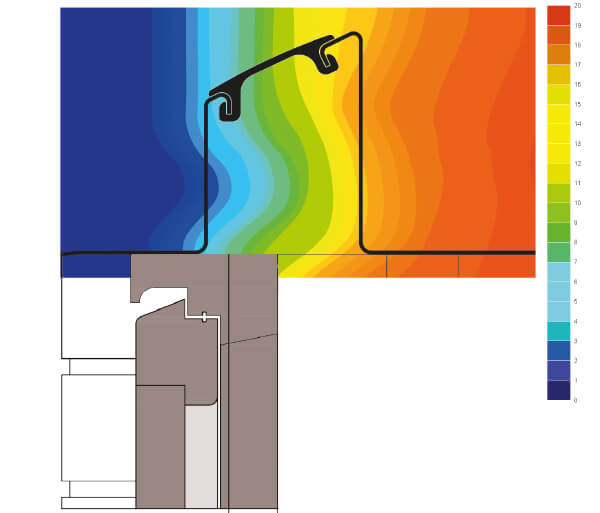Thermally Efficient
Up to 5 times more thermally efficient than a standard steel lintel.
The Building Regulations Part L
Building Regulations Part L sets the minimum standards for energy performance of new and existing buildings. In the latest changes to Part L, a mandatory (FEES) Fabric Energy Efficiency Standard has been introduced in addition to the original (TER) Target Emission Rate which measures CO².
Part L Challenge
The introduction of FEES is based on the principal of preventing energy waste by ensuring the fabric of the building is adequately insulated and airtight. As the fabric of the building will remain for the lifetime, getting the fabric right at the beginning will save energy for the whole life of the dwelling, meaning more efficient homes.
The FEES target puts focus on the thermal performance of the building fabric i.e. walls, floors, roofs and the materials / components that make these elements up. Lintels are in most cases the most significant thermal bridge, meaning lintels can have an important impact on the overall thermal performance of a building.
For example in a modern well insulated 3 bedroom house with a floor area of 60m², the heat loss through a standard lintel can account for approximately 6%* of the overall heat loss through the fabric of the
house. Using a Hi-therm+ lintel reduces this figure to 0.25% virtually eliminating thermal bridging.
* based on a default lintel psi value of 0.5 W/m.K
SAP 2012 and Appendix R
‘Standard assessment procedure’ (SAP) is adopted by government as the UK’s methodology for calculating the energy performance of buildings and ultimately demonstrating compliance with Part L Building Regulations.
Appendix R of SAP 2012 provides a specification for a notional dwelling of identical proportions and dimension which provides the target for the CO² and the FEES. If a dwelling is built conforming to Appendix R values it will achieve the CO² and Fabric Energy Efficiency targets to comply with Part L.
Appendix R requires a lintel Psi value of 0.05 W/m.K, which the Hi-therm+ lintel achieves (see the psi value comparison chart).
The Importance of Psi Values
The thermal performance of a lintel is expressed in terms of a Psi value i.e. linear thermal transmittance which is more commonly referred to as ‘thermal bridging’.
The increasing focus on thermal bridging means that materials specifications and component selection need to be carefully considered as part of the overall compliance strategy to meet Part L.
Poorly performing products and SAP calculations using default Psi values are increasingly penalised, the only way to improve the SAP calculation at this stage will be to over compensate in the design by improving other areas of the fabric such as higher performing insulation, wider cavities or bolt on renewables ultimately increasing the build cost.
To design efficiently for Part L, it’s important that energy assessors use independently calculated psi values or manufacturer calculated psi values providing they have been calculated by a trained person using specialist thermal modeling software. Keystone’s technical support team are trained and accredited to provide specific psi value calculations free of charge that can be directly input in to SAP calculations.
Talk to our Technical experts to find out how Hi-therm+ could save money on your build specification.
The Importance of lintels
Hi-therm+ can achieve the Appendix R value for steel lintels in Part L 2013 depending on the wall construction. This table shows how Hi-therm+ outperforms all other lintel types.
| Lintel Type Comparison | |
|---|---|
| Hi-therm+ Lintel | 0.03 – 0.06 W/m.K |
| Part L Appendix R value | 0.05 W/m.K |
| Standard Lintel | 0.22 W/m.K |
| Default Non Plated Steel Lintel | 0.33 W/m.K |
| Plated Steel Lintel (Default) Table K1 | 0.5 W/m.K |
| * Depending on wall construction. | |

